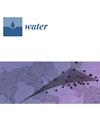利用水质指数对城市地下水质量进行地理空间和地理统计多标准综合评价
IF 3
3区 环境科学与生态学
Q2 ENVIRONMENTAL SCIENCES
引用次数: 0
摘要
在巴基斯坦第二大城市拉合尔,地下水污染构成了严重的公共健康风险,过度开采的含水层是该市主要的市政和生活供水来源。本研究采用创新的综合方法,结合地理信息系统 (GIS)、多标准决策分析 (MCDA) 和水质指数技术,首次对拉合尔全区的地下水质量进行了全面评估。其核心目标是绘制砷等关键污染物的空间分布图,模拟其对总体可饮用性的影响,并评估有针对性的补救方案。根据专家的判断,采用层次分析法 (AHP) 计算出不同水质参数的相对重要性权重。砷的权重最高(0.28),其次是总溶解固体(0.22)和硬度(0.15),这反映了它们对健康危害的重要性。地理信息系统(GIS)中的加权叠加分析划定了局部地区的水质热点,揭示了拉合尔坎特、模范城等城市工业区以及拉合尔市部分地区水质严重恶化、指数值极低(>150)的区域。这证实了有关工业废水排放不规范造成含水层污染的报道。根据前瞻性改善方案预测,将重金属(如砷)减少 30% 可使沙利玛尔等严重退化地区的水质指数提高 20.71%。通过模拟先进的多屏障水处理工艺,砷含量可能会减少 95%以上,这表明需要根据当地污染物的情况部署先进的氧化和过滤基础设施。综合决策支持工具可实现复杂污染模式的可视化、补救方案的评估,以及根据危害暴露的空间分布确定风险缓解投资的优先次序。这一框架为城市规划者和公用事业部门提供了重要的见解,有助于他们通过包括处理设施、排水基础设施改善和污染物排放法规在内的战略干预措施,制定有针对性的地下水质量恢复政策。通过强大的数据综合和定量情景建模能力,该框架可在其他地区复制,从而应对广泛的地下水污染挑战。本文章由计算机程序翻译,如有差异,请以英文原文为准。
Integrated Geospatial and Geostatistical Multi-Criteria Evaluation of Urban Groundwater Quality Using Water Quality Indices
Groundwater contamination poses a severe public health risk in Lahore, Pakistan’s second-largest city, where over-exploited aquifers are the primary municipal and domestic water supply source. This study presents the first comprehensive district-wide assessment of groundwater quality across Lahore using an innovative integrated approach combining geographic information systems (GIS), multi-criteria decision analysis (MCDA), and water quality indexing techniques. The core objectives were to map the spatial distributions of critical pollutants like arsenic, model their impacts on overall potability, and evaluate targeted remediation scenarios. The analytic hierarchy process (AHP) methodology was applied to derive weights for the relative importance of diverse water quality parameters based on expert judgments. Arsenic received the highest priority weight (0.28), followed by total dissolved solids (0.22) and hardness (0.15), reflecting their significance as health hazards. Weighted overlay analysis in GIS delineated localized quality hotspots, unveiling severely degraded areas with very poor index values (>150) in urban industrial zones like Lahore Cantt, Model Town, and parts of Lahore City. This corroborates reports of unregulated industrial effluent discharges contributing to aquifer pollution. Prospective improvement scenarios projected that reducing heavy metals like arsenic by 30% could enhance quality indices by up to 20.71% in critically degraded localities like Shalimar. Simulating advanced multi-barrier water treatment processes showcased an over 95% potential reduction in arsenic levels, indicating the requirement for deploying advanced oxidation and filtration infrastructure aligned with local contaminant profiles. The integrated decision support tool enables the visualization of complex contamination patterns, evaluation of remediation options, and prioritizing risk-mitigation investments based on the spatial distribution of hazard exposures. This framework equips urban planners and utilities with critical insights for developing targeted groundwater quality restoration policies through strategic interventions encompassing treatment facilities, drainage infrastructure improvements, and pollutant discharge regulations. Its replicability across other regions allows for tackling widespread groundwater contamination challenges through robust data synthesis and quantitative scenario modeling capabilities.
求助全文
通过发布文献求助,成功后即可免费获取论文全文。
去求助
来源期刊

Water
WATER RESOURCES-
CiteScore
5.80
自引率
14.70%
发文量
3491
审稿时长
19.85 days
期刊介绍:
Water (ISSN 2073-4441) is an international and cross-disciplinary scholarly journal covering all aspects of water including water science and technology, and the hydrology, ecology and management of water resources. It publishes regular research papers, critical reviews and short communications, and there is no restriction on the length of the papers. Our aim is to encourage scientists to publish their experimental and theoretical research in as much detail as possible. Full experimental and/or methodical details must be provided for research articles. Computed data or files regarding the full details of the experimental procedure, if unable to be published in a normal way, can be deposited as supplementary material.
 求助内容:
求助内容: 应助结果提醒方式:
应助结果提醒方式:


